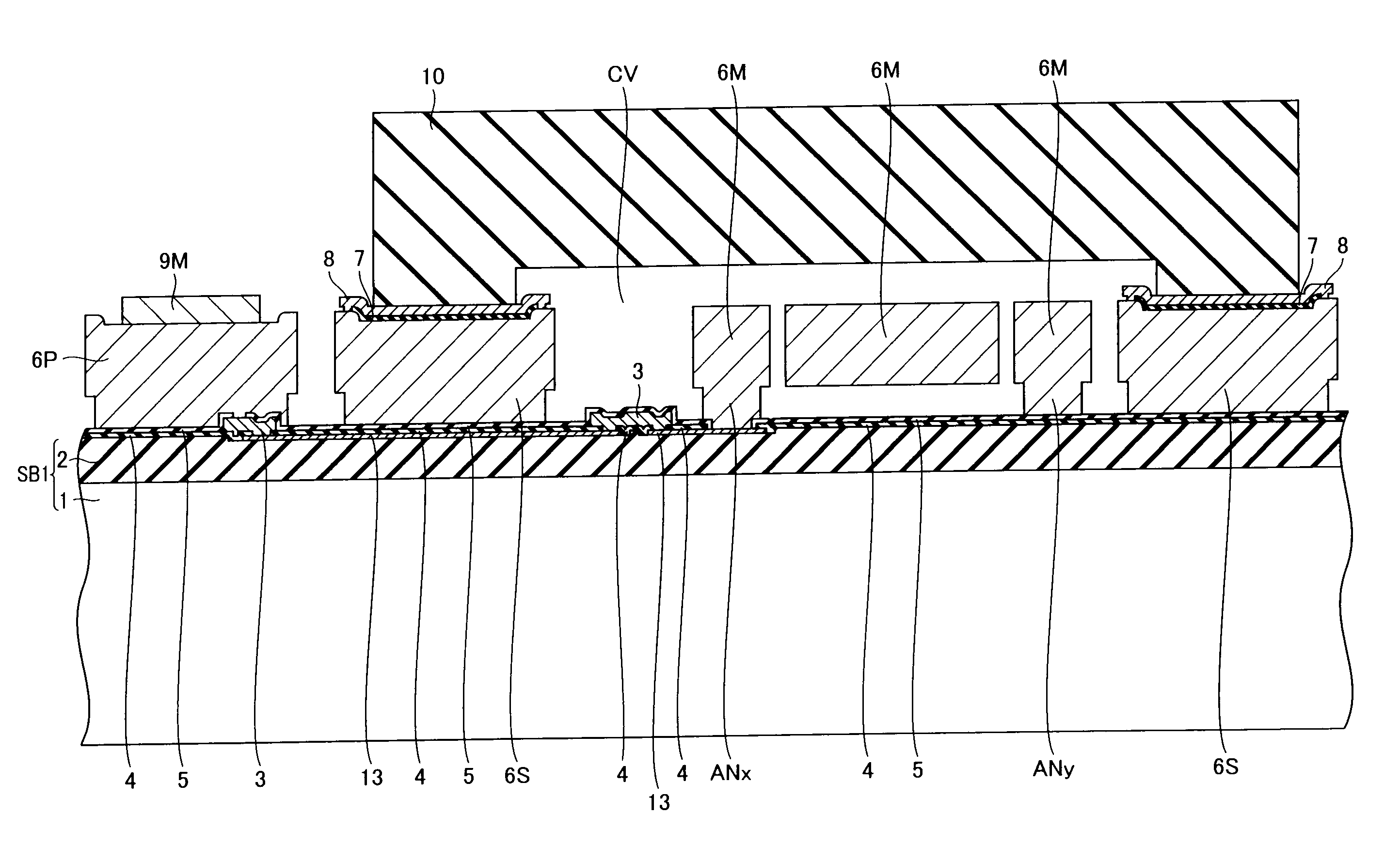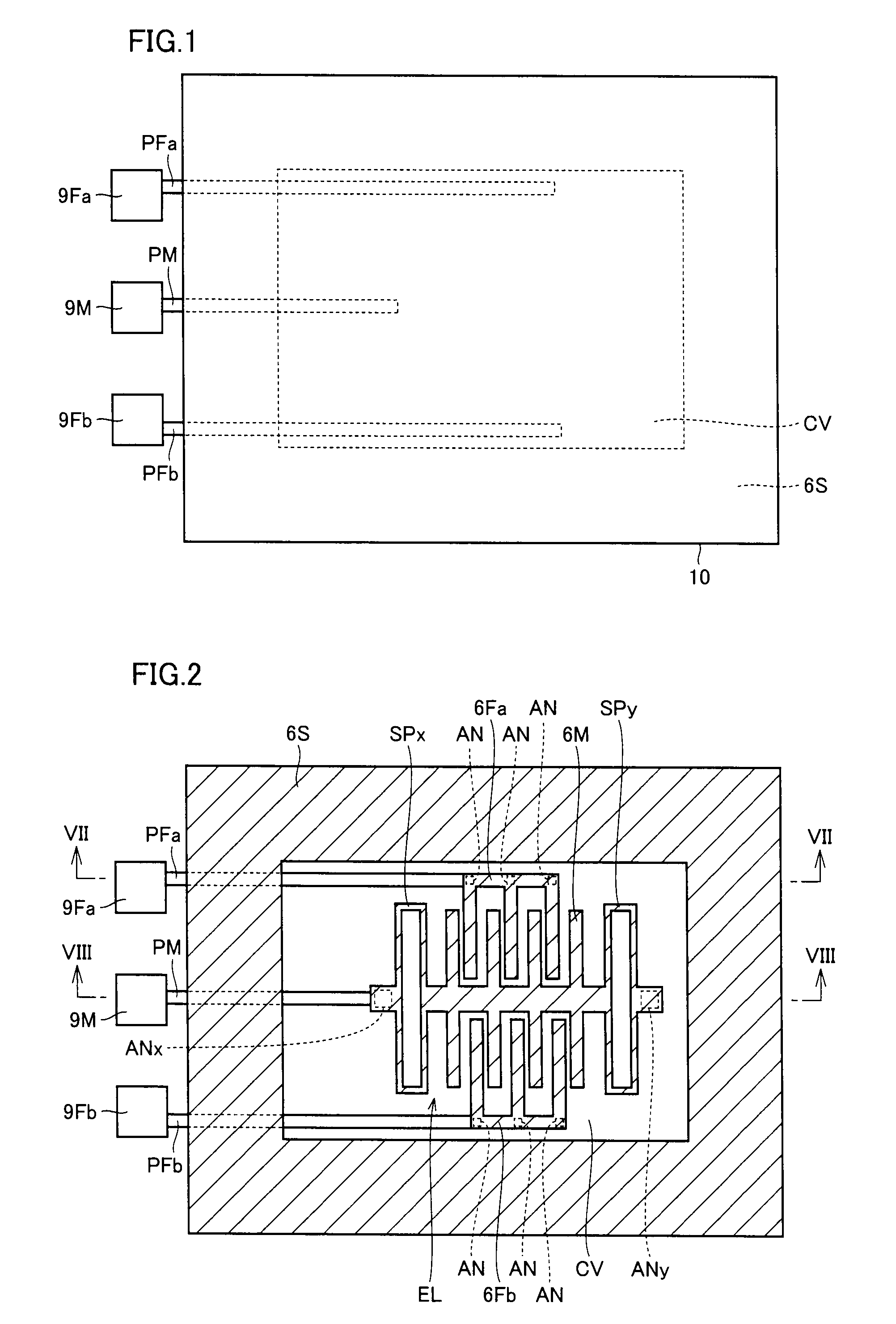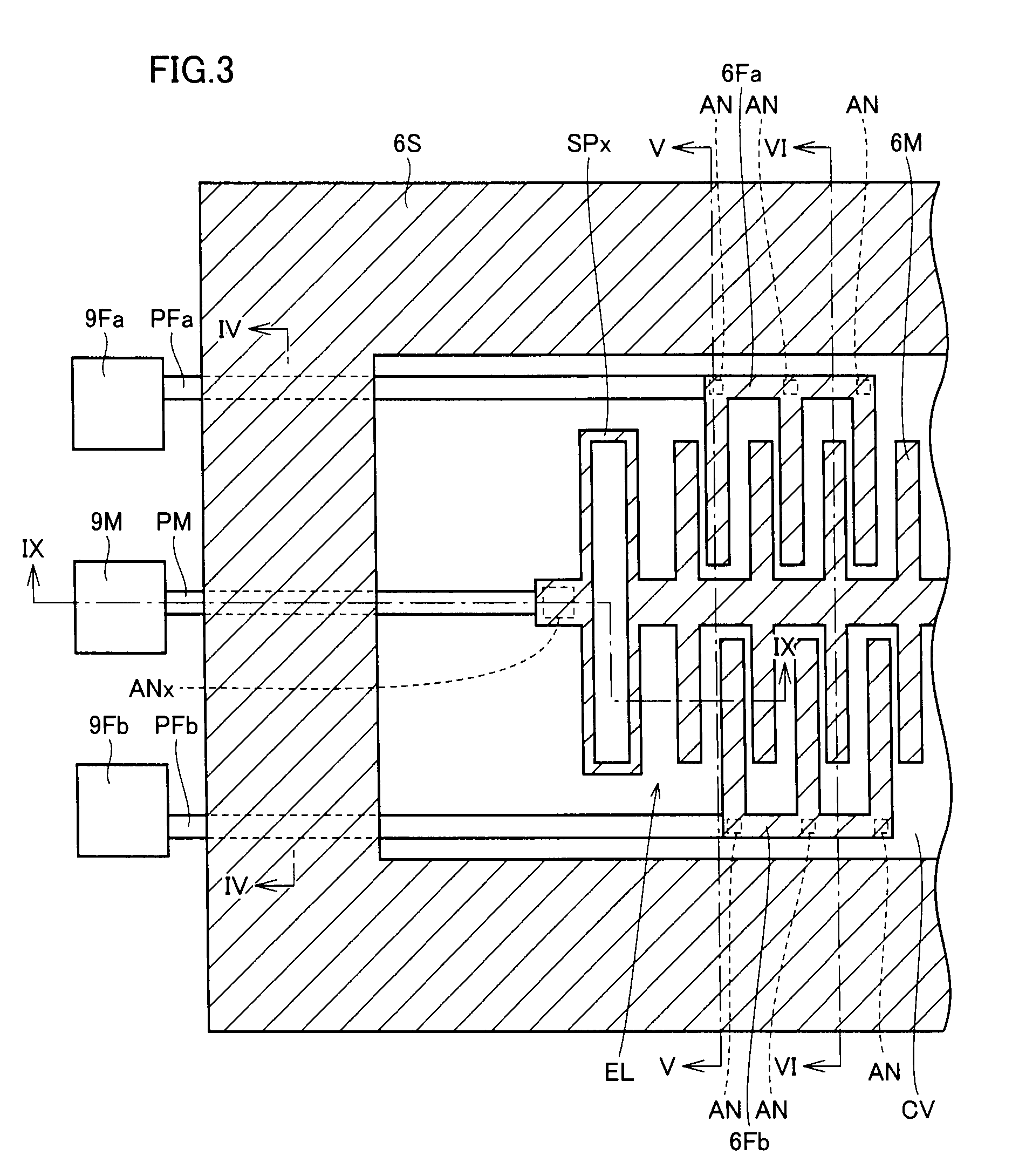Semiconductor device and method of manufacturing the semiconductor device
a semiconductor and semiconductor technology, applied in the field of semiconductor devices, can solve the problems of increasing the risk of electrical resistance of interconnection, affecting the sealing effect of the cavity, and the inability to ensure the airtightness of the cavity without difficulty, so as to reduce the electric resistance of the interconnection and ensure the airtightness of the cavity
- Summary
- Abstract
- Description
- Claims
- Application Information
AI Technical Summary
Benefits of technology
Problems solved by technology
Method used
Image
Examples
first embodiment
[0054](First Embodiment)
[0055]First, description will be given on a structure of an acceleration sensor that is a semiconductor device of a first embodiment.
[0056]Referring primarily to FIG. 9, an acceleration sensor that is a semiconductor device of the first embodiment primarily has a substrate SB1, a doped polycrystalline silicon layer 13 (first interconnection), a doped polycrystalline silicon layer 3 (second interconnection), an acceleration sensing unit EL (element) in FIG. 2, a sealing unit 6S (member) and a cap 10.
[0057]Substrate SB1 has a silicon substrate 1 having a main surface, and an oxide film 2 formed on the main surface. Oxide film 2 has a groove formed on the side opposite to silicon substrate 1. Thus, substrate SB1 has the groove.
[0058]Doped polycrystalline silicon layer 13 extends along this groove and is located on the bottom surface thereof Doped polycrystalline silicon layer 13 is made of Doped Polycrystalline Silicon (DOPS). Impurities used for the doping are,...
second embodiment
[0094](Second Embodiment)
[0095]First, description will be given on a structure of an acceleration sensor that is a semiconductor device of a second embodiment.
[0096]Referring to FIGS. 28 and 29, the acceleration sensor of this embodiment includes a substrate SB2 having a groove instead of substrate SB1 (FIGS. 4 and 9) having the groove in the first embodiment. Substrate SB2 has silicon substrate 1 (the substrate member forming a bottom of the groove), an oxide film 2f and an oxide film 16 (the insulating film forming a side surface of the groove). Oxide film 2f is arranged on silicon substrate 1. For reducing a parasitic capacitance related to silicon substrate 1, oxide film 2f usually has a thickness of 1 μm or more. Oxide film 16 is formed selectively on oxide film 2f, and a region on oxide film 2f where oxide film 16 is not arranged forms the groove of substrate SB2.
[0097]Structures other than the above are substantially the same as those in the first embodiment already described...
third embodiment
[0105](Third Embodiment)
[0106]First, description will be given on a structure of an acceleration sensor that is a semiconductor device of a third embodiment.
[0107]Referring primarily to FIGS. 35 and 36, the acceleration sensor that is the semiconductor device of this embodiment primarily has a substrate SB3, a doped polycrystalline silicon layer 30 and an oxide film 40.
[0108]Substrate SB3 has silicon substrate 1 having a main surface, and oxide film 2f formed on this main surface. Oxide film 40 is formed on a part of oxide film 2f. A structure formed of substrate SB3 and oxide film 40 has a groove formed in a region where oxide film 40 is not formed on oxide film 2f.
[0109]Doped polycrystalline silicon layer 30 extends along this groove and is located on the bottom surface of the groove. Doped polycrystalline silicon layer 30 is formed of doped polycrystalline silicon. Impurities used for doping are, e.g., phosphorus (P). Doped polycrystalline silicon layer 30 has a thickness equal ...
PUM
 Login to View More
Login to View More Abstract
Description
Claims
Application Information
 Login to View More
Login to View More - R&D
- Intellectual Property
- Life Sciences
- Materials
- Tech Scout
- Unparalleled Data Quality
- Higher Quality Content
- 60% Fewer Hallucinations
Browse by: Latest US Patents, China's latest patents, Technical Efficacy Thesaurus, Application Domain, Technology Topic, Popular Technical Reports.
© 2025 PatSnap. All rights reserved.Legal|Privacy policy|Modern Slavery Act Transparency Statement|Sitemap|About US| Contact US: help@patsnap.com



